The Samsung Galaxy Note7 (S820) Review
by Joshua Ho on August 16, 2016 9:00 AM ESTSystem Performance
As previously mentioned this year a major goal of ours was to focus on benchmarks with metrics that better indicate user experience rather than being subject to additional layers of indirection in addition to updating our previously used benchmarks. Probably one of the hardest problems to tackle from a testing perspective is capturing what it means to have a smooth and fast phone, and with the right benchmarks you can actually start to test for these things in a meaningful way instead of just relying on a reviewer’s word. In addition to new benchmarks, we’ve attempted to update existing types of benchmarks with tests that are more realistic and more useful rather than simple microbenchmarks that can be easily optimized against without any meaningful user experience improvements. With that said, let's get into the results.
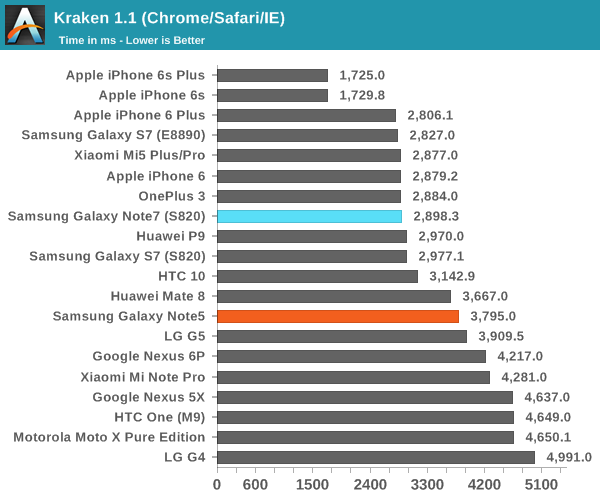
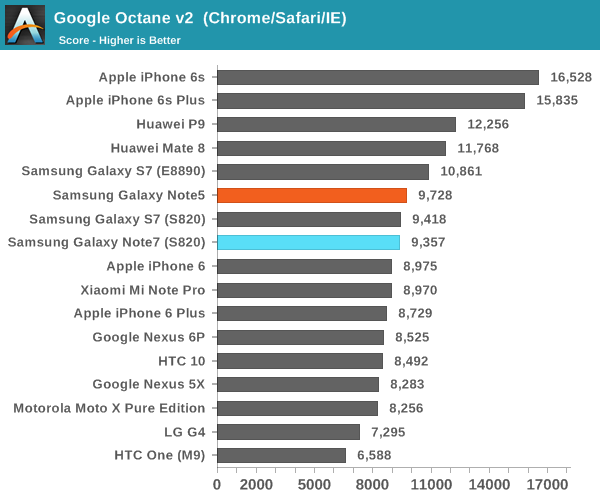
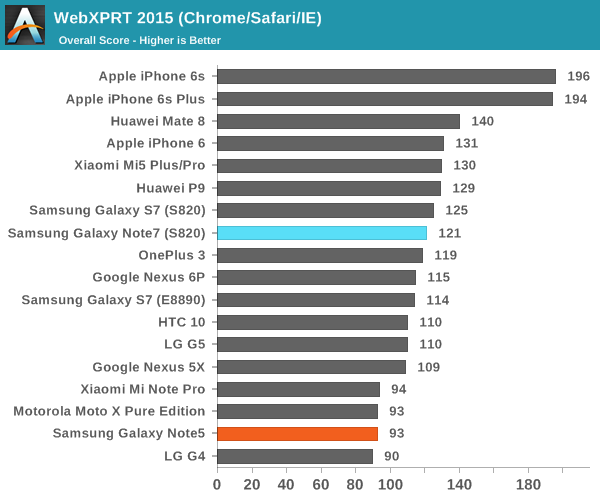
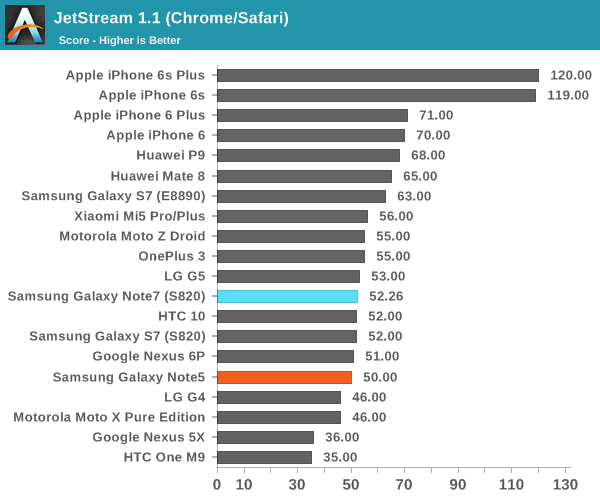

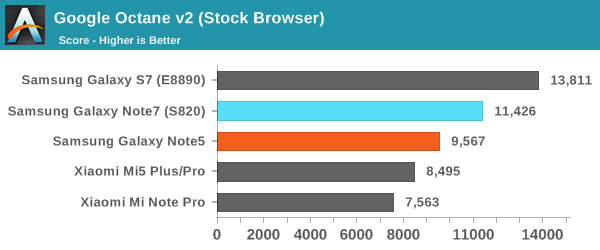
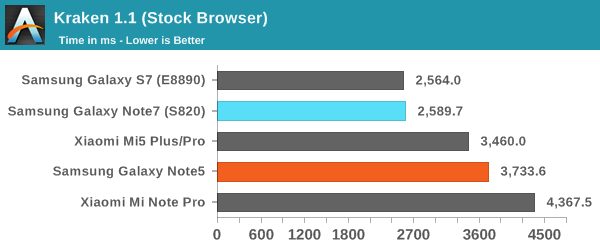
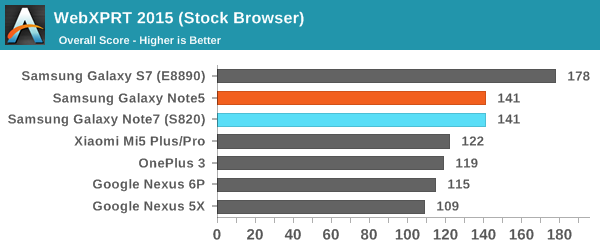
Browser performance here is pretty much in line with expectations as pretty much every OEM using Snapdragon 820 is going to be using the same basic BSP and most of the optimizations here are going to be done by Qualcomm rather than the OEMs.
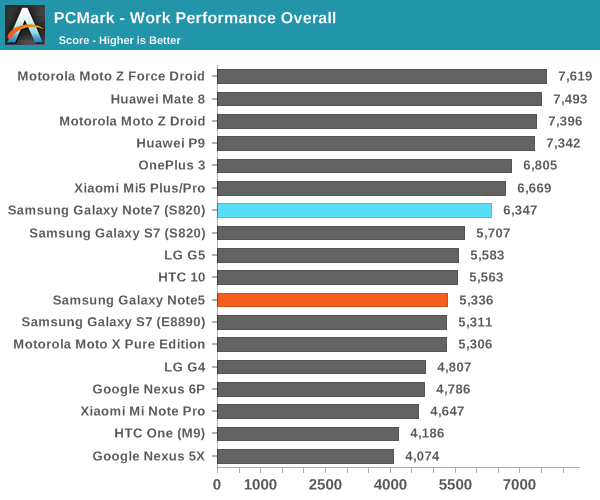
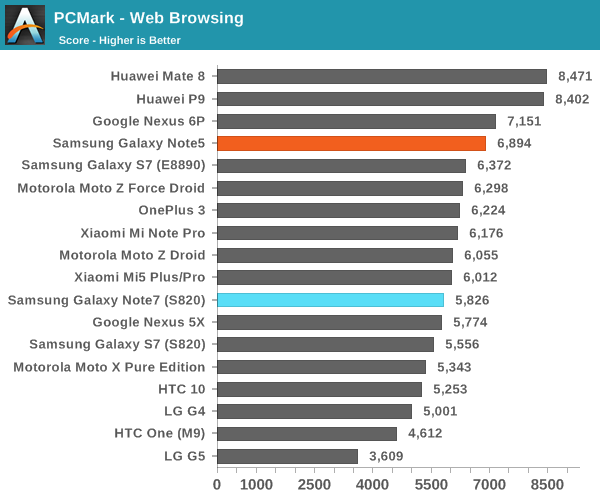
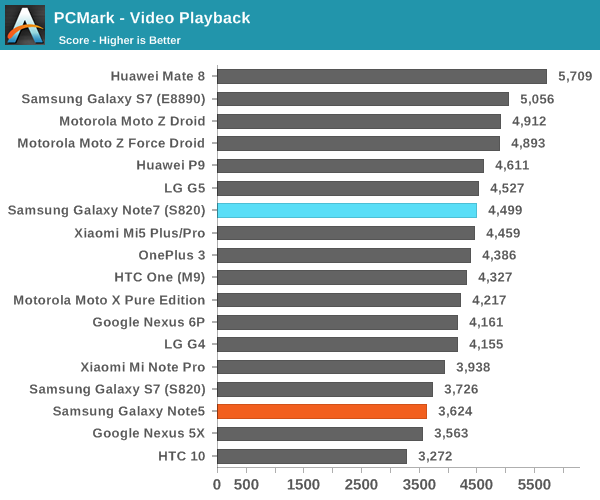
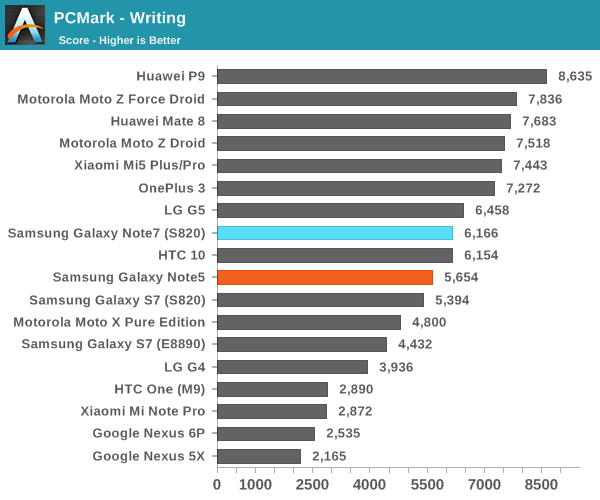
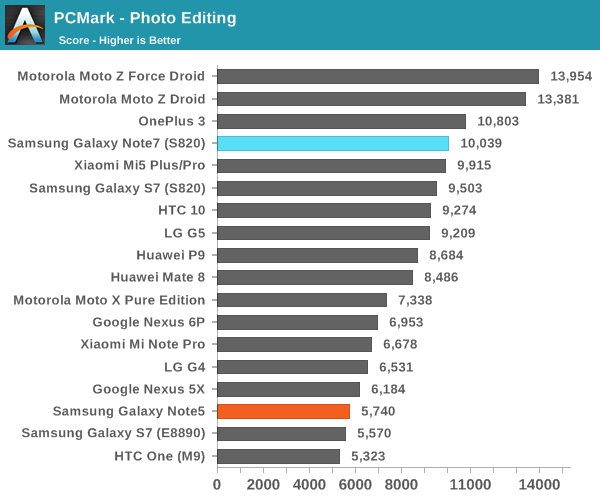
Again, performance is in line with expectation in PCMark, although there are some improvements here and there that are primarily centered about web browsing performance which is almost constantly being improved as developers figure out new optimizations for browsers. With that said we can move on to Discomark, which is a true high level benchmark designed to show exactly how quickly a suite of common Google and OEM applications load from NAND or from RAM.
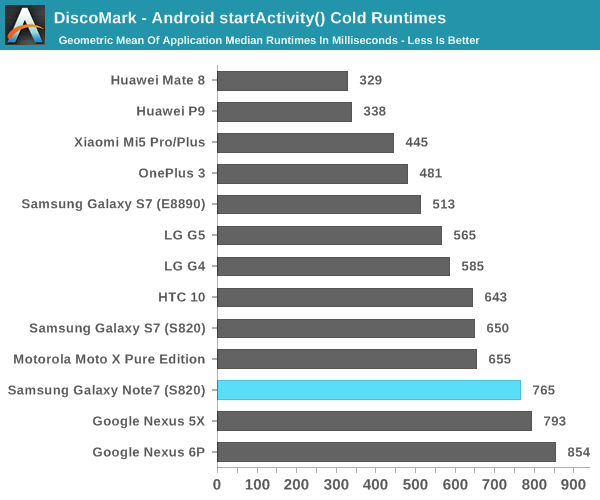
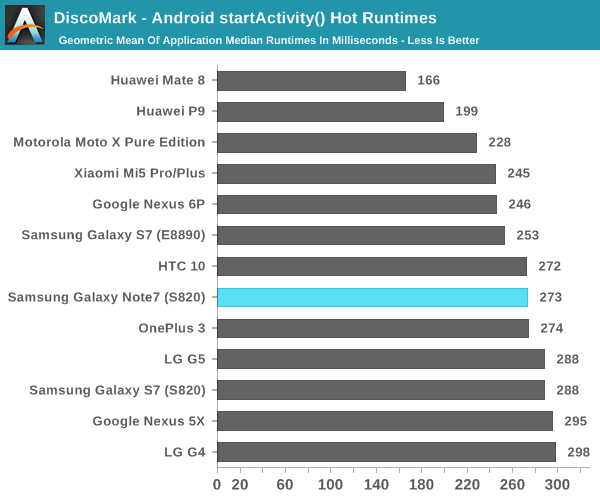
Here the Galaxy Note7 shows some improvement on hot runtimes relative to the Galaxy S7, but the cold runtimes have dropped for some reason. It looks like much of the delta here is due to Dropbox which is now running significantly slower on the Galaxy Note7. I suspect that this is related to possible changes in Dropbox or its interaction with TouchWiz rather than any significant underlying difference in system performance relative to the Galaxy S7. Overall, the Galaxy Note7 performs about where you'd expect from a Snapdragon 820 device from Samsung given the performance of the Galaxy S7.












202 Comments
View All Comments
thunderwave_2 - Thursday, August 18, 2016 - link
Look at the S7 Exynos stock browser results. Yes, the iPhone 6s still outperforms it, but it isn't exactly "wiping the floor" with it.Also, consider that although the onscreen benchmarks seem to be in its favour, the S7 is rendering almost 4 times the pixels. While the Mali T880/Adreno 530 is ahead though, the iPhone 6s does admittedly have superior sustained performance.
iOS runs less background processes and is less resource intensive than Android, leading to the great battery figures.
trparky - Saturday, August 20, 2016 - link
Which tells me that Samsung didn't equip the device with a strong enough GPU to push the amount of pixels and sustain high frame rates. If you ask me, there's no reason why that device should have such a high pixel count. Once you go past a certain point it becomes nothing but bragging rights.As for iOS running less background processes, that's a good thing. Yeah, Android is pretty bloated under the hood. And then you throw Samsung's garbage on top and you make it even worse. Android's not nearly as optimized as iOS is.
slyronit - Tuesday, August 23, 2016 - link
The device has a high pixel count because it uses a Pentile display, so the effective resolution is always less than advertised. A Pentile 1080p on such a big screen would look like crap.lilmoe - Tuesday, August 16, 2016 - link
It was surpassed in performance and efficiency a long time ago, by the Exynos 7420... The 8890 widened the gap further.I know you guys want to believe that Apple's chips are the best. I feel your pain. But it's not, no matter how many "reviewers" preach browser benchmarks. Geekbench is by no means a legit benchmark. lol.
Even on the GPU side, the PowerVR has long been surpassed.
Stop blaming Google's shortcomings on Samsung, Qualcom and others. Google's _services_ are great, but their software and optimization level is absolute brown stuff. Samsung, LG and everyone else has to literally fix Android before releasing a phone/update...
CloudWiz - Tuesday, August 16, 2016 - link
Performance...only in multi-threaded benchmarks. Twister absolutely destroys A57 in any single-threaded benchmark and since for the vast majority of use cases (i.e. web browsing) the OS only uses one core, the overall user experience is so much better with the A9. Mongoose is catching up but still not at Twister's level.As for efficiency, the modem on the S6 makes it last a ridiculously short amount of time on LTE and even on Wifi the 6s lasts half an hour longer with a battery two-thirds the size of the S6. The 6s Plus lasts a full 2 hours longer with a similar size battery.
The GT7600 was only beaten in GFXBench this year by the Adreno 530 and surpasses both Adreno 530 and the T880MP12 in Basemark (it also has equal performance to the T880 in Manhattan). You make it sound like the GT7600 is multiple generations behind while it is not. It absolutely crushes the Adreno 430 and the T760MP8 in the Exynos 7420. The GX6450 in the A8 was underpowered but the GT7600 is not.
I do hope that at some point Apple adds two Cortex-A53s to help with low power tasks, but given that their dual-core design already achieves insanely good performance (with the A10 seeking to equal the performance of A9X in a mobile device), they might not even need to.
lilmoe - Tuesday, August 16, 2016 - link
"and since for the vast majority of use cases (i.e. web browsing) the OS only uses one core"False. On Android, the vast majority of applications take full advantage of 4 or more cores.
"As for efficiency, the modem on the S6 makes it last a ridiculously short amount of time on LTE and even on Wifi the 6s lasts half an hour longer with a battery two-thirds the size of the S6. The 6s Plus lasts a full 2 hours longer with a similar size battery."
Also, false. As proven by personal experience, with good reception, the modem on the modern Exynos chips can be more efficient than WiFi. What you're seeing in the charts, my friend, is that Safair (or any browser for the matter), is more efficient that Chrome (shocker). What you're also seeing is that, 720p and 1080p are more battery friendly than 1440p (another shocker). It's amazing that the GS6/GS7 can keep up with that much overhead and more pixels to push.
osxandwindows - Wednesday, August 17, 2016 - link
Not really, those cores are waisted cores.The scheduler sucks, therefore making android inefficient overall when it comes to the use of multiple cores.
thunderwave_2 - Thursday, August 18, 2016 - link
http://www.anandtech.com/show/9518/the-mobile-cpu-...This piece shows that, on the S6 at least, not all of those cores go to waste.
osxandwindows - Thursday, August 18, 2016 - link
Nope, you don't get it.osxandwindows - Thursday, August 18, 2016 - link
I'm not saying it can't use them, I'm saying it can't use them an a way that doesn't affect performance or battery life.